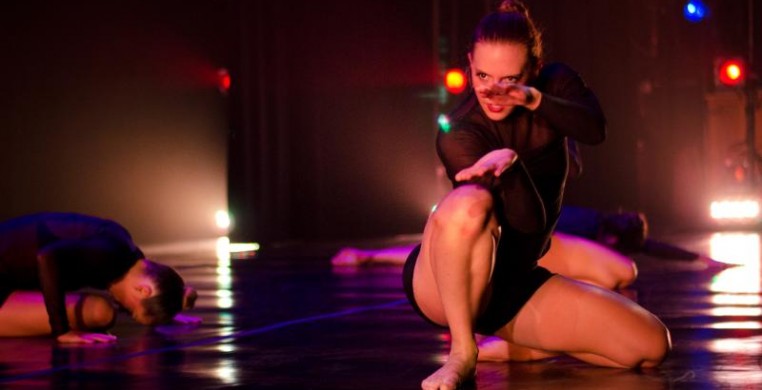In the twelve years since its founding, Inaside Chicago Dance has yet to really break out from alongside other companies of its size and stature, filling about half of the main floor at the Atheneaum last Saturday evening - mostly with tweens and their parents. The makeup of Saturday’s audience is a true testimony to the strength of Inaside’s educational programs, and the importance of fostering dance patrons into the next generation. Not every young Inaside dancer will become one of their group of lovely company dancers, but a quality dance education like the one available at Inaside will create good, technical dancers, and more importantly, advocates for the art form into the future.
Standouts of Inaside’s titleless spring concert last weekend included Eric Rivera’s sexy duet “Contratiempo” (with a specific nod to Jesse Powers for his effort in this piece) and Robert McKee’s rousing full-company closer called “Pathways.” Richard Smith’s long opener revived from 2010, “When No Means Maybe,” is a cute series of boys against girls vignettes in which everybody wins, and Sinead Gildea’s 2012 nicely composed “Capsule” appears to take on an alien invasion theme dressed all in gold. In truth, the evening was totally chock full of dance, so full, in fact, that it’s difficult to really remember what happened. Each piece is presented without program notes and loosely interpretable themes in dance after dance performed by large portions of the company and divided by tiny intermissions for costume changes.
This concert was, at its heart, dance for dance’s sake. That is well and good, but there’s got to be something to hold on to. It’s not that Inaside’s spring concert left a bad impression – it just didn’t make much impression at all. It’s not my intent to criticize the amount of energy that goes into producing a concert (not that at all), but simply to ask that dance companies strive to commission and produce work that is worthy of all that effort. For the most part, these dances had the same tone, strung together by steps rather than ideas. Had they not been dressed with different lights, music and costumes, four of the dances were the same. Those tweens in the audience need to know that dance has the capacity to be more powerful than the sum of its steps; my hope for Inaside is that they choose to capitalize on the tremendous opportunity they have to influence and inspire the next generation of dancers. But then, it's clear they’re already doing that.

